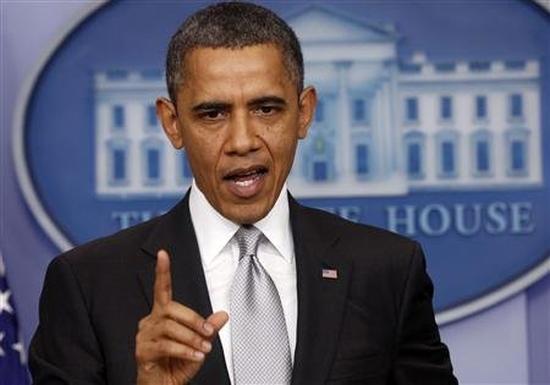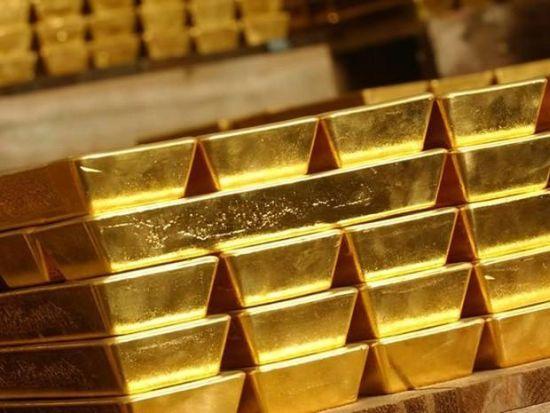Photographs: Parth Sanyal/Reuters Jan Harvey in London
Is gold's extraordinary rally finally about to end as it limps towards the close of its twelfth year of gains?
Even a fright over the US budget has failed to revive much interest in a commodity, often treated as a safe investment in troubled times, that has seen its average annual prices climb every year starting in 2001.
Most banks still cling to forecasts for gold to hit record highs in 2013, but the factors they cite - ultra-low interest rates, fears of inflation - have so far failed to propel prices out of the past year's sideways trading channel.
A brief upwards price spike in November, in response to the latest monetary stimulus programme by the US central bank, was quickly met by selling.
As trading thins into year-end, the metal is down nearly 5 percent from four weeks ago in a further erosion of what looks like its smallest annual gain since 2008, of some 7 percent.
At around $1,666 an ounce on Wednesday, it remains 13 percent below last year's record high of $1,920.30 and well away from the $2,000 level that beckoned to gold bulls at the time.
"The bears have basically said to the gold market, 'we don't believe you', and hit the price hard," bullion broker Sharps Pixley's chief executive Ross Norman said.
"The test of a market is how it behaves under adversity, and gold did not perform well."
This year's average gold price, while still a record high at $1,668 an ounce, has fallen well short of analysts forecasts at the start of the year for an average of $1,765.
Charts show prices have held within a broad sideways trend channel since dropping from 2011's record.
...
Is gold's bull-run over after 12 years of gains?
Image: US President Barack Obama speaks about the fiscal cliff to members of the media in the White House Briefing RoomPhotographs: Kevin Lamarque/Reuters
An informal survey conducted by Reuters last week showed ten out of 12 analysts still expect gold prices to set new highs both in intraday and average terms next year.
But gold bulls counting on low interest rates, heightened sovereign debt fears in the euro zone and the threat of inflation risk encountering the law of diminishing returns.
A fresh round of monetary stimulus from the US Federal Reserve last week, in the form of a pledge to buy $45 billion a month in longer-term Treasuries, failed to produce more than a few hours' worth of gains in gold.
Last time the Fed announced action on a similar scale, on September 13, it sparked a rally in gold to its highs for the year.
The troubles in the euro zone have not proved particularly positive for gold this year, due to the pressure they have put on the euro versus the dollar, strength in which tends to weigh on the price of assets denominated in the U.S. unit.
When Spanish bond yields topped 7 percent in July, gold prices were still languishing around their lows for the year.
US real interest rates have been at ultra-low levels throughout the year, without driving prices significantly higher, while U.S. and euro zone inflation expectations remain anchored despite loose monetary policy.
Rates threat
A rise in real interest rates is perhaps the biggest threat to stronger gold prices as they increase the opportunity cost of holding the metal rather than higher yielding instruments.
In a note this month, Goldman Sachs said a stronger US growth picture may prompt just such a rate rise, and consequently a turn in the gold market cycle, next year.
...
Is gold's bull-run over after 12 years of gains?
Photographs: Reuters
"Our... modelling suggests that the improving US growth outlook will outweigh any Fed balance sheet expansion, and that the cycle in gold prices is near an inflection point," it said.
But stronger growth next year, as Goldman points out, is by no means certain, particularly with the approach of the so-called fiscal cliff in the United States.
If tax hikes and spending cuts worth $600 billion arrive in the new year, they could spark another recession.
Uncertainty about the 'cliff' prompted economists polled by Reuters in November to cut early 2013 US growth expectations for the fourth straight month. For 2013 they expect a 2 percent growth rate, but some say growth forecasts would be 1-1.5 points higher without this threat.
If negotiations fail to avert the crisis and US growth stalls, gold prices could rally. In addition, a sharp rise in inflation that central banks struggle to control could also spark a jump in prices, because gold is viewed as a solid store of value.
For sure, gold still has its friends. Demand for physical gold and physically backed investment products is strong, with the amount of metal held by gold exchange-traded funds, which issue securities backed by physical bullion, rising to a series of record highs in recent months.
Gold coin demand, which fell in the first three quarters of this year after rising to nearly 40 million ounces in 2011, is also showing signs of recovery. US Mint gold American Eagle sales posted its strongest November for 14 years last month.
...
Is gold's bull-run over after 12 years of gains?
Photographs: Reuters
Physical demand in India, though sharply lower this year, is holding up surprisingly well given the weakness of the rupee, which makes the metal more expensive for other currency holders.
But a return to gold at $1,900 an ounce and above is likely to require a stronger driver than those gold has so far seen.
"What is likely to push gold prices higher than the previous spike?" Sector Investment Managers' Angelos Damaskos said. "It could be a major crisis in the euro zo#8800 if in the new year we find the new restructuring package for Greece is not enough, and Greece requires a new bailout; if we find Spain requires other money; if there are other big issues in the euro zone."
In the absence of such a crisis event, the approach of the fiscal cliff, more easing measures, and gold buying from the official sector all auger well for gold. But supportive as these are, they do not necessarily translate into $2,000 gold.
"The environment for gold is good, but it isn't improving further by the day, so some slowdown in the uptrend in gold should be expected," Credit Suisse analyst Tobias Merath said.
"The days of very easy gains, when you could just buy gold, hold it, and see it rise 10, 11, 12 percent each year are over."
(Additional reporting by Veronica Brown in London)






article